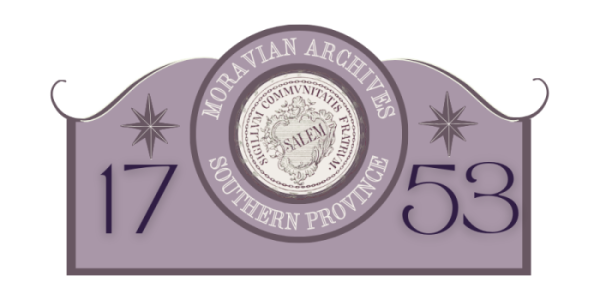Trinity Moravian Church
The beginning of Trinity Moravian Church goes back to another time and another church.
It was 1886, a year of great spiritual revival, and some ladies of Salem saw a need for a Sunday school and chapel in the growing new community of Centerville about a mile south of Salem on the Waughtown Road. Church leaders agreed, and on March 21 that year the Centerville Sunday School was organized by Superintendent James T. Lineback. It had an impressive line-up of teachers: Alice Rondthaler, Mary Ann Fogle, Claudia Winkler, and Gertrude Jenkins. In short order the school needed permanent quarters, so on August 22 that year the cornerstone for a chapel was laid, again with an impressive line-up of Bishop Edmund de Schweinitz (who was visiting from the North), Edward Rondthaler, L. B. Wurreschke, John Clewell, and the Rev. H. A. Brown of the Baptist church in Winston. The chapel was consecrated and put to use that November 28.
But such an impressive beginning did not take into account one thing. The Centerville chapel was located on Chapel Street, some 500 feet from the trolley line that was run out Waughtown Street about 1900. Centerville began to die.
Taking courage, Centerville members elected to relocate, and in 1911 an impressive new church began to rise on a lot bounded by Sprague, Lomond, and Sunnyside Streets — conveniently next to the trolley line on Sprague. The building was completed April 13, 1912, and the congregation was formally organized that July 14 with the name Trinity.
Under the 37-year pastorate of Douglas L. Rights from 1919 to 1956, Trinity flourished. A massive Sunday school building was constructed in the 1920’s to accommodate 1,000 people. A newsletter was begun, which during World War II kept members in the armed services abreast of church events. Neighboring congregations of New Eden and Pine Chapel received assistance. Following Br. Rights’s death, a chapel was constructed in his memory.
Trinity’s outreach bore fruit again in the 1970’s with the opening of a neighborhood social ministry that was adopted by the Southern Province as Sunnyside Ministry. Over the years it has helped many with food, clothing, utilities, and other essentials of life and spirit.
